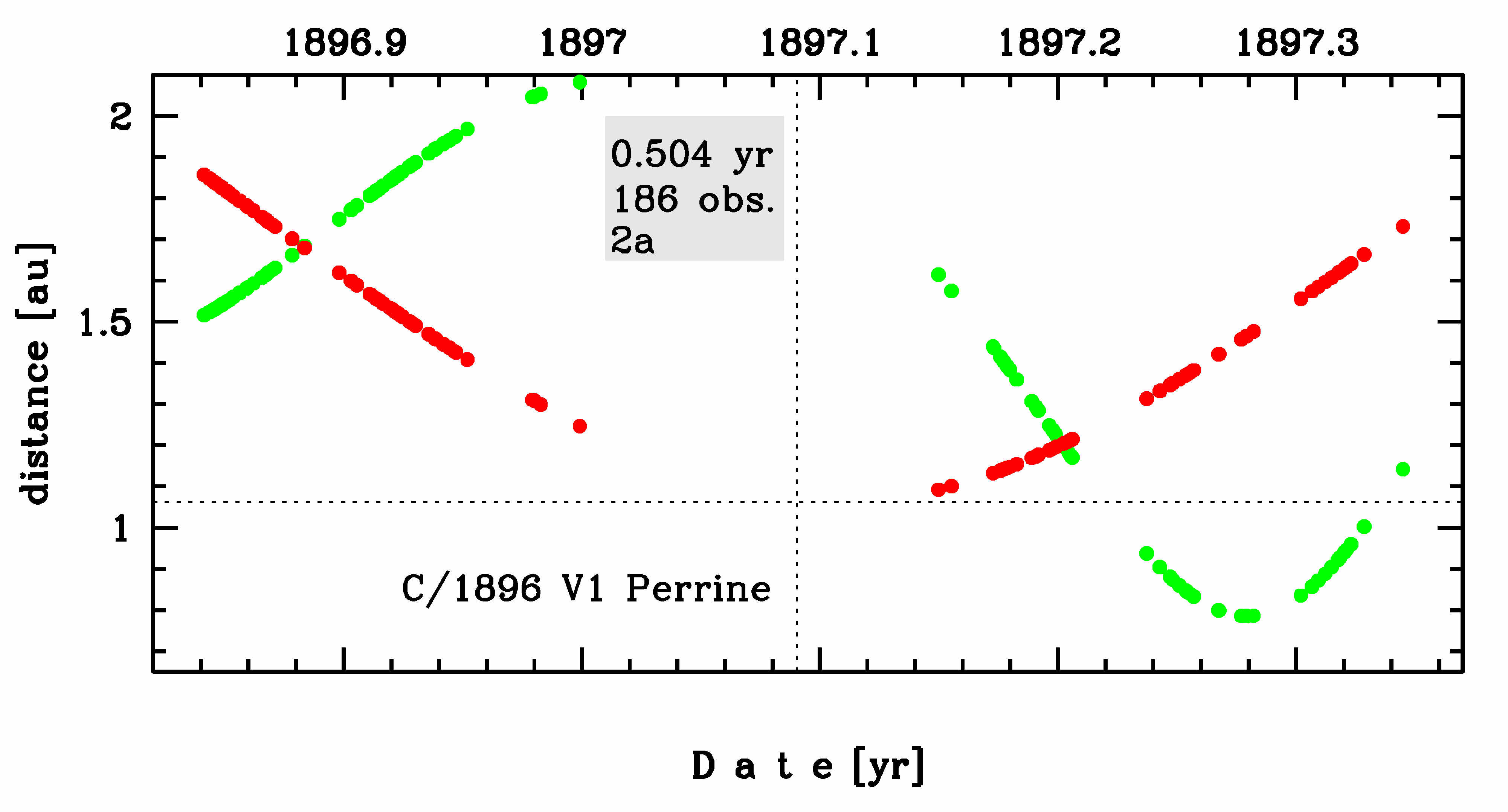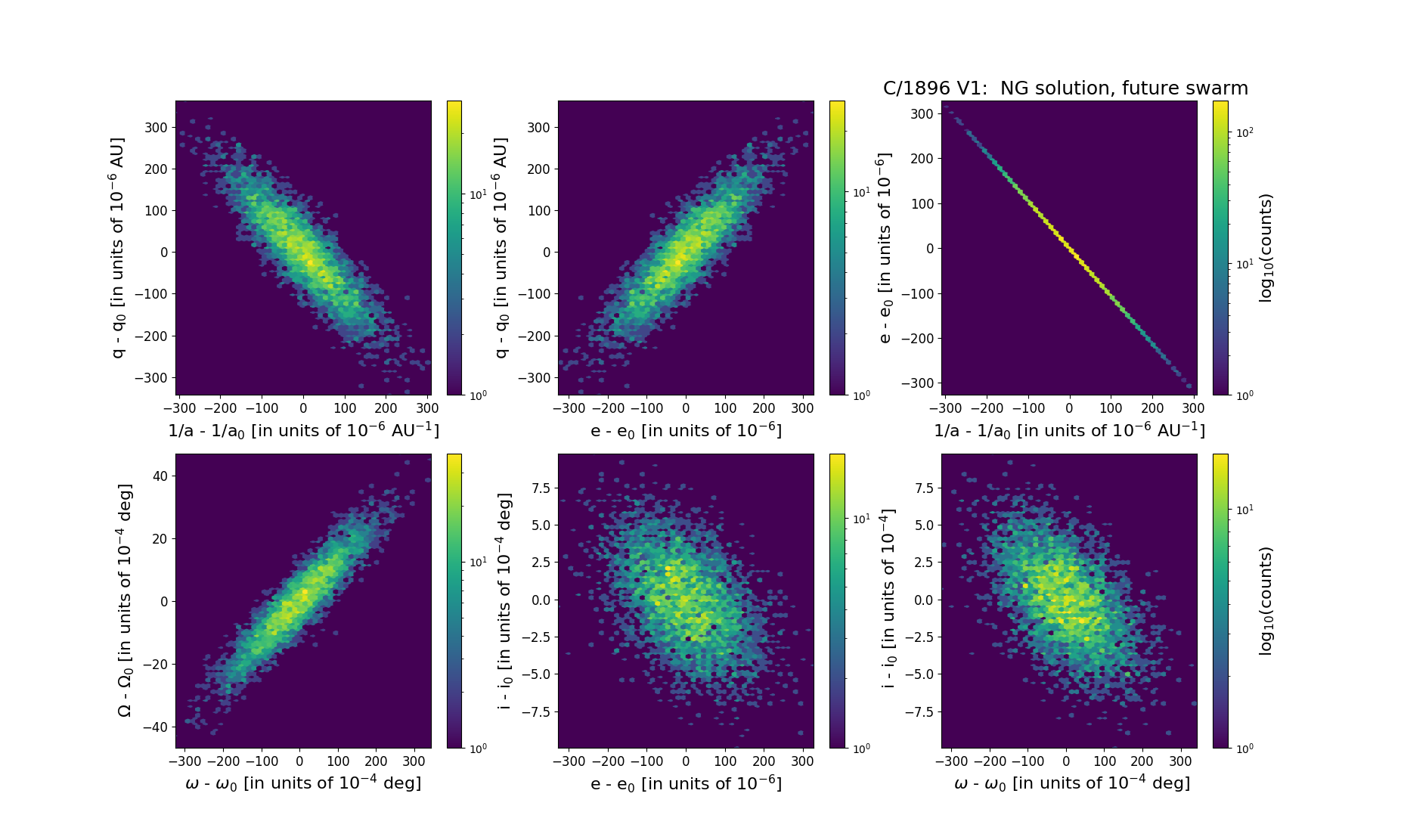C/1896 V1 Perrine
more info
C/1896 V1 was discovered on 3 November 1896 by Charles Dillon Perrine (Lick Observatory, California, US), that is about 3 months before its perihelion passage, and it was last seen on 6 May 1897 [Kronk, Cometography: Volume 2].
This comet made its closest approach to the Earth on 12 April 1897 (1.14 au), that is a bit more than two months after perihelion passage.
Solutions given here are based on data spanning over 0.504 yr in a range of heliocentric distances from 1.86 au through perihelion (1.063 au) to 1.73 au.
This comet suffers notable planetary perturbations during its passage through the planetary system; these perturbations lead to escape the comet from the planetary zone on hypebolic orbit (see future barycentric orbits).
C/1896 V1 was in the original sample of 19 comets used by Oort for his hypothesis on LPCs, and according to presented here statistics for previous perihelion passage, this comet most probably is dynamically new.
See also Królikowska 2020.
This comet made its closest approach to the Earth on 12 April 1897 (1.14 au), that is a bit more than two months after perihelion passage.
Solutions given here are based on data spanning over 0.504 yr in a range of heliocentric distances from 1.86 au through perihelion (1.063 au) to 1.73 au.
This comet suffers notable planetary perturbations during its passage through the planetary system; these perturbations lead to escape the comet from the planetary zone on hypebolic orbit (see future barycentric orbits).
C/1896 V1 was in the original sample of 19 comets used by Oort for his hypothesis on LPCs, and according to presented here statistics for previous perihelion passage, this comet most probably is dynamically new.
See also Królikowska 2020.
| solution description | ||
|---|---|---|
| number of observations | 186 | |
| data interval | 1896 11 03 – 1897 05 06 | |
| data type | perihelion within the observation arc (FULL) | |
| data arc selection | entire data set (STD) | |
| range of heliocentric distances | 1.86 au – 1.06 au (perihelion) – 1.73 au | |
| type of model of motion | NS - non-gravitational orbits for standard g(r) | |
| data weighting | YES | |
| number of residuals | 343 | |
| RMS [arcseconds] | 4.94 | |
| orbit quality class | 2a | |
| orbital elements (barycentric ecliptic J2000) | ||
|---|---|---|
| Epoch | 2185 10 13 | |
| perihelion date | 1897 02 09.14805698 | ± 0.00454916 |
| perihelion distance [au] | 1.06013638 | ± 0.00009639 |
| eccentricity | 1.00095835 | ± 0.00009091 |
| argument of perihelion [°] | 172.488771 | ± 0.009111 |
| ascending node [°] | 88.134604 | ± 0.001217 |
| inclination [°] | 146.012524 | ± 0.000269 |
| reciprocal semi-major axis [10-6 au-1] | -903.98 | ± 85.68 |
| file containing 5001 VCs swarm |
|---|
| 1896v1n2.bpl |

